How to care for gooseberries in spring after winter: basic spring work in the country
In order for the gooseberry to bear fruit abundantly for many years, this wonderful vitamin shrub must be carefully looked after during its entire growing season. Naturally, it is especially important to provide the bush with comfortable conditions after winter, when there is practically no strength left for further development and recovery after hibernation.
So how do you care for gooseberries in the spring to get a good harvest in the new year? Read on!
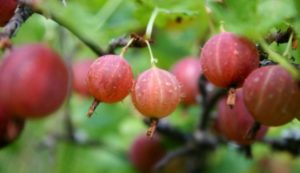
Content
When to start carrying out spring gooseberry care after winter: timing
As for the time of the start of work on spring care for gooseberries after winter, they, as a rule, begin to be produced after the snow melts and melts, the temperature will be positively stable, and the air warms up to +4 .. + 5 degrees.
However! This does not apply early spring treatment of bushes with boiling water (carried out similarly to currants)since it should be done much earlier, when there is still snow.
First of all, you should pay attention to the appearance of your shrub, since spring pruning and the first treatment of gooseberries from diseases and pests must be carried out even before the buds swell and bloom. Therefore, it is very important not to miss the moment and, at the very first favorable (= warm) spring days, come to the country house and get down to business.
Of course, it is necessary to take into account the climatic features of different regions and, accordingly, start spring work on the care of gooseberries on time:
- So, in the southern regions, gooseberry care is started almost immediately after winter - from March.
- In the Middle Lane (Moscow region), you can start caring for gooseberry bushes in the spring in the second half of April.
- In the North-West (in the Leningrad region), as well as in the Urals and Siberia, spring care for gooseberries is carried out a little later, closer to the end of April-early May.
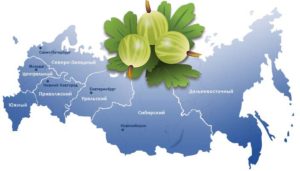
How to care for gooseberries in spring: basic activities
Regardless of the different starting dates for work in different regions, the scheme of spring activities for the care of berry bushes is approximately the same.
So what should you do with gooseberries in the spring to get a good and tasty harvest?
As a rule, the following works are part of the gooseberry care activities in spring:
- opening after winter (mulch harvesting);
- pruning;
- loosening and weeding;
- watering;
- mulching;
- top dressing;
- treatment against pests and diseases;
- reproduction and transplant (if necessary).
Video: what to do with gooseberries in spring to get a good harvest - care rules
Removing shelter after winter (cleaning mulch and cleaning shrubs from debris)
First of all, after the snow melts, you need remove all last year's mulch, which in winter played the role of not only a heater, but also became an excellent residence for many pests, as well as the spores of various fungi. In addition, it is necessary to rake the bush from the trunk circle (it is very convenient to do this using a fan rake) any remaining leaves and so on. Then all this organic waste should be taken outside the site and burned.
This way you can protect gooseberries from hungry insects and fungal spores and thereby preventing their reproduction.
In addition, open soil warms up faster with the sun's rays, which stimulates the plant to start growing.
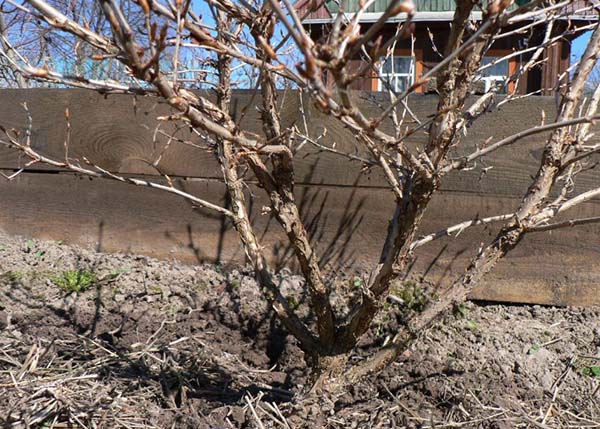
Pruning
The next most important spring gooseberry care activity is pruning.. A correctly performed procedure will enable the shoots of the bush to receive more solar power (light), which will ultimately have a positive effect on its yield. In addition, due to better ventilation, gooseberries will be less susceptible to fungal diseases and pest attacks.
If last year you already did autumn pruning of bushes, then in the spring, as a rule, you will only need to check whether the shrub has survived the winter well, in other words, to spend sanitary pruning.
If you didn't do autumn gooseberry pruning, then it should be done now, i.e. in the spring.
By the way! More about pruning gooseberries in spring read in this article.
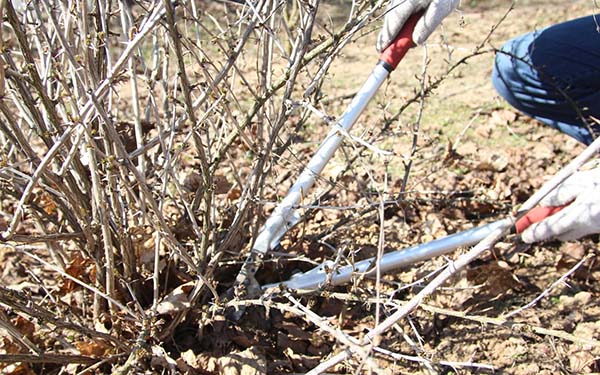
Loosening and weeding
Then you can proceed to loosening the soil... The purpose of this event is, first of all, to improve the access of air, as well as moisture and nutrition, to the plant roots.
Becausegooseberries, like currants (and in general, berry bushes), have a rather superficial root system, loosening must be done carefully, doing it preferably with a special hoe (in no case with a shovel, this is not a tree for you), to a depth of no more than 5 -6 cm.
As a rule, weeding is also carried out along with loosening.
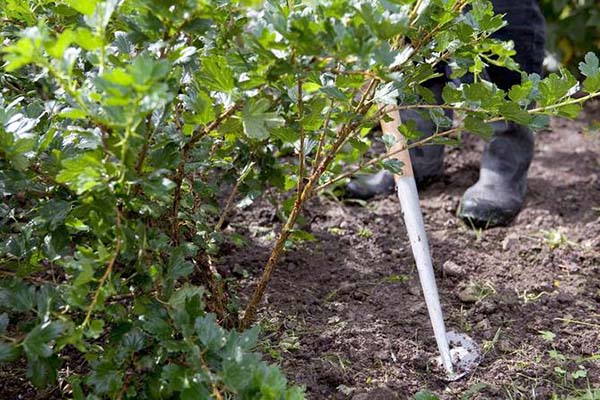
Watering
After the soil is dry from the snow and the weather is dry, in other words, there will be no rain, it is very important not to let the gooseberries "dry out".
In the future, in the spring, gooseberries are watered with slightly warm water, in the morning or in the evening, about 1 time a week, while pouring about 30-40 liters of water under one adult bush. It is especially important to moisturize the plant during the flowering period.
Obviously, if the gooseberry does not receive sufficient moisture, then there can be no question of any large and tasty berries.
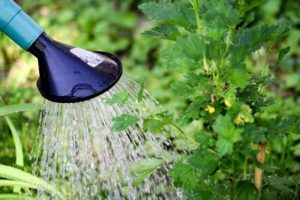
Mulching
To reduce moisture evaporation and prevent the growth of weeds, you can mulch the gooseberry tree trunk circle in the spring with a layer of sawdust, cones, straw or fertile soil - humus, compost, peat, vermicompost.
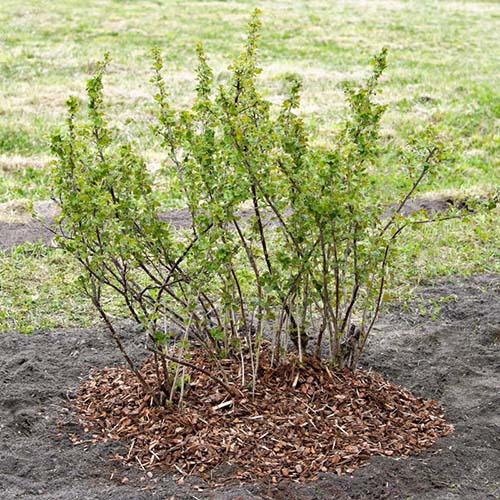
Thus, thanks to mulching, you will need to water the shrubs much less often (moisture will hold on much better), and there will also be less weeds.
Top dressing
This is another key activity that is included in the list of basic elements of spring bush care, and thanks to which you can significantly increase your yield.
Of course, if you know when and what exactly you need to fertilize gooseberries in the spring.
A short scheme for applying top dressing for gooseberry bushes is as follows:
- at the very beginning (during the period of bud swelling), gooseberries need nitrogen - to build up green mass (as an option, you can add ammonium nitrate or mulch with humus or compost, or even better apply a complex fertilizer, such as nitroammofoska);
- before flowering - more phosphorus and potassium (which, as a rule, are given in the fall, more precisely, after fruiting and picking berries).
By the way! More information about when and what to feed gooseberries in spring, you will find in this material about feeding currants (because they are similar).
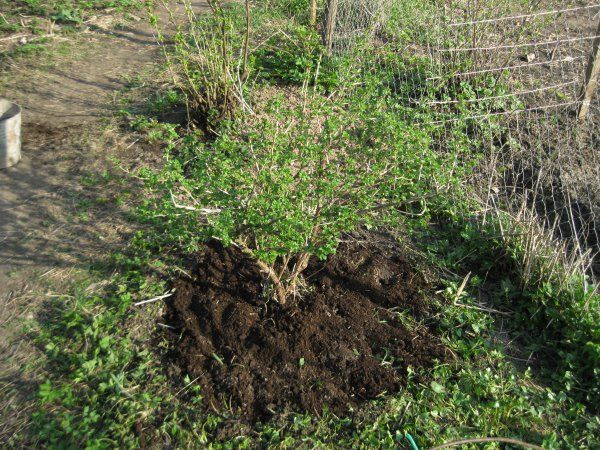
Treatment against diseases and pests
Spraying bushes against diseases and pests is another essential element of spring gooseberry care.
Therefore, after winter, still in early spring, You can pour boiling water over the gooseberries (similar to currants).
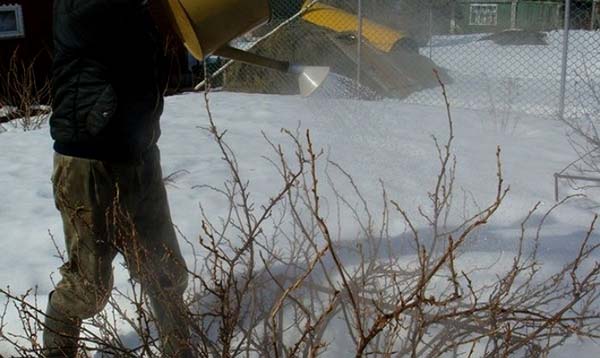
Of course, pouring boiling water over the bushes is clearly not enough, so then you will need to spring eradication sprayingas well as several preventive and protective treatments gooseberries from diseases (especially against powdery mildew) and pests.
Important! More details about processing and spraying gooseberries in the spring you'll find in this article.
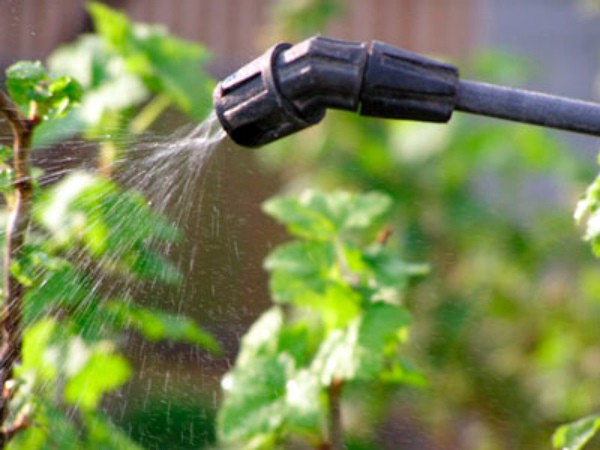
Transplant and reproduction
If your bush has noticeably decreased fruiting and it has generally stopped developing, it's time to transplant it, before multiplying in one of several ways.
Also, the reasons for transplanting may be a banal redevelopment of the site or the need to move a completely young berry bush to another place (for example, due to an incorrectly chosen place or generally incorrect planting.
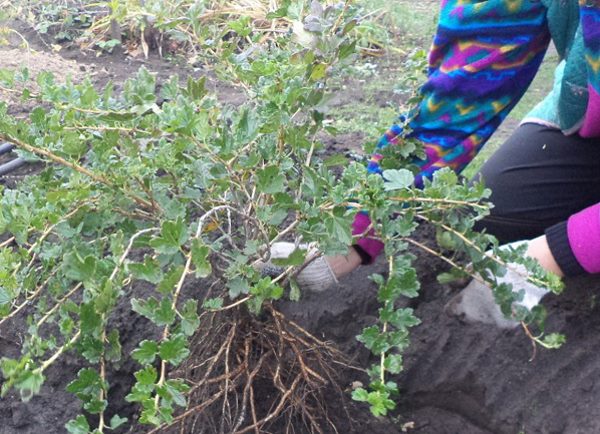
It is believed that it is best to transplant gooseberries (and other shrubs) in the autumn period, but this does not mean at all that it cannot be carried out in spring or even summer, especially if it is really necessary.
By the way! The site has a detailed article about how to transplant currants correctly in spring, summer and autumn (the technique is basically the same).
So, if you decide to transplant a shrub in the spring, then it is very desirable to do this before the start of sap flow in its shoots (before the buds of the plant wake up).
Note! You can find detailed information about planting gooseberries in spring and about the ways of its reproduction.
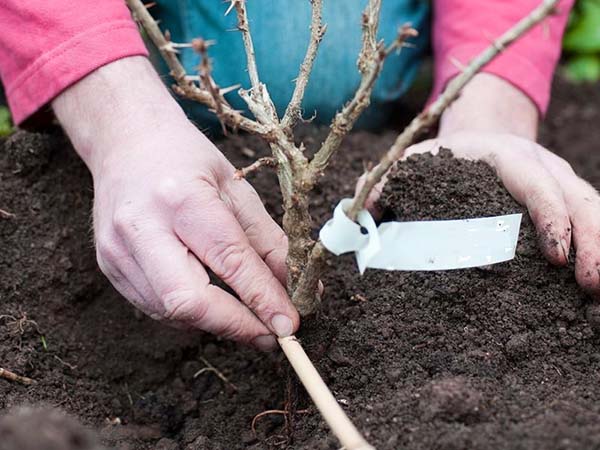
Common mistakes in gooseberry care in spring
It is common for every person to make mistakes, especially when it comes to unfamiliar jobs.
This is why novice gardeners are often mistaken about the following spring gooseberry care activities:
- Untimely start to spring care (say, you need to cut off before sap flow and swelling of the kidneys, as well as pour boiling water over, and you can feed it after or during, as well as treat it with fungicides and insecticides for diseases and pests).
- They do everything in the wrong order (it makes no sense to first process the gooseberry from diseases and pests, and then prune it, it is better to do the opposite).
- Pruning is carried out incorrectly or not at all (for example, because of pity for the plant, short and weak branches are not cut off, which is why it is more likely to suffer from fungal diseases and bear fruit worse).
- They feed incorrectly (they apply an excessive amount of nitrogen fertilizers, forgetting about potassium and phosphorus) or do not fertilize at all.
- Ignore preventive treatments to protect gooseberries from pests and diseases.
Thus, having devoted very little time to proper care for gooseberries in the spring, you can safely count on a bountiful harvest.
Video: caring for gooseberries in spring - proper pruning, processing and reproduction

